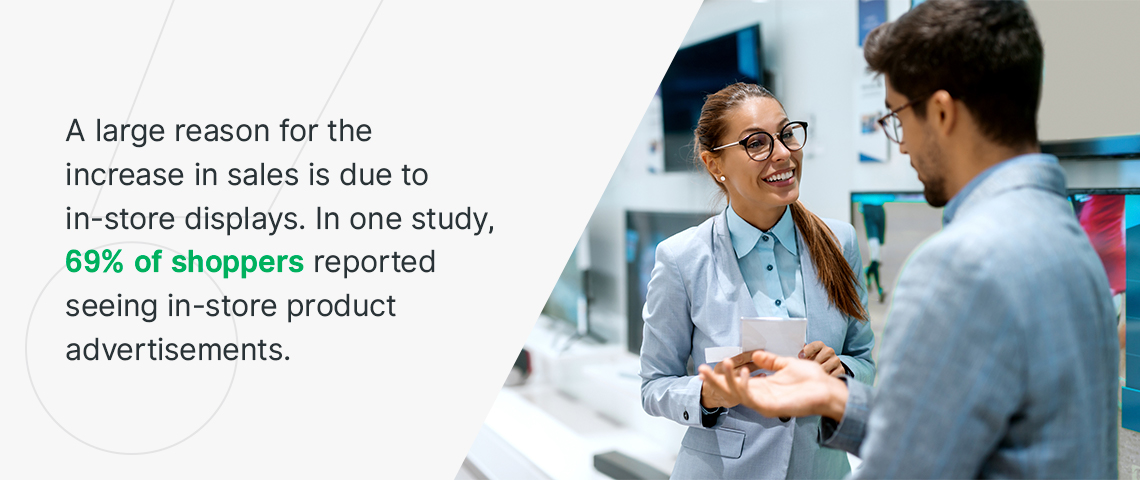Do Custom Displays Increase Sales?
Custom displays are a valuable marketing tool that companies use to boost their sales and increase brand awareness. They showcase your products in an eye-catching display so shoppers can see and access them easily. There are many different types of retail displays you can customize to achieve your marketing objectives. Brands that sell consumer packaged goods (CPG) can use custom displays to drive sales, build their reputation and grow their customer base.
How Do Displays Increase Sales?
Rather than competing for attention from densely packed shelves, you can place custom visual displays in high-traffic areas where shoppers are more likely to notice your products and purchase them. Displays promote your merchandise and help customers make buying decisions. Marketers often use retail displays to increase sales for:
- New products: Visual displays can highlight new items and promote their product features.
- Seasonal items: Whether you’re promoting pumpkins in the fall or poinsettias in the winter, visual displays can help sell more seasonal goods.
- High-end products: Sometimes, shoppers need more information before they commit to purchasing a high-priced item. You can use visual displays to tell your customers why they need your product.
- Complementary goods: You can’t have cereal without milk or shoes without socks, but these items aren’t always next to each other in the store. Visual displays allow you to promote products that shoppers often purchase together. The convenience makes customers more likely to choose your brand.
- Promotional items: Visual displays place sale items in a prime location where shoppers will notice.
Is In-Store Advertising Effective?
Although e-commerce has increased significantly over the last decade, in-store advertising is still a vital asset. Shoppers tend to spend more while shopping in a retail store. They’re also more likely to make an impulse purchase in-store than online. Customers purchase more items than they intended 75% of the time.
A large reason for the increase in sales is due to in-store displays. In one study, 69% of shoppers reported seeing in-store product advertisements. The same shoppers browsed the products, and 61% also purchased them. It’s clear that in-store advertising is an effective strategy to boost retail purchases.
Why Your Products Need POP Displays
Point-of-purchase (POP) displays can benefit your business in many ways. Showcasing your products helps establish brand awareness and increase sales. If you’re unsure if POP marketing is suitable for your products, consider these store display statistics:
- In 2020, consumers made 82% of retail purchases in a physical store.
- In the U.S., CPG merchandising executives reported a perceived increase in sales of 19% from permanent displays and 23.8% from temporary displays.
- In 2016, 30% of U.S. industry executives agreed that the most important reason for doing POP advertising is a short-term sales lift.
- Nearly 27% agreed the second most important reason is brand building.
What You’ll Learn in This Guide
In this guide, you’ll learn all about custom POP displays and how to use them. We’ll review the different types of fixtures, the benefits they offer and POP strategies that make the biggest impact. If you want to learn more about point-of-purchase displays and visual merchandising, explore our collection of online guides and resources. You’ll find information about the CPG industry, retail customers and other valuable insights from a lead POP display designer and manufacturer.

